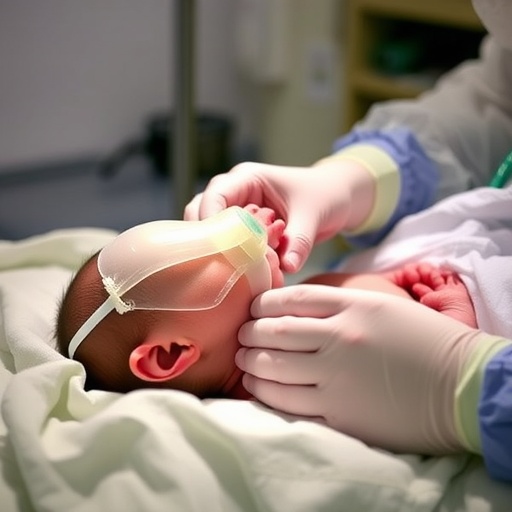Historically, endotracheal intubation has been the gold standard for delivering adrenaline during advanced resuscitation efforts in neonates when initial ventilation proves insufficient. Yet, this method presents significant technical challenges, including the requirement for highly skilled personnel, potential delays in drug delivery, and increased risk of airway trauma. To circumvent these limitations, the scientific team spearheaded by Abbasi and colleagues explored the LMA, an innovative supraglottic device, as a more accessible and less invasive conduit for administering epinephrine effectively.
Crucially, the study’s findings also have implications for training and resource allocation in neonatal intensive care units (NICUs). By demonstrating that LMAs can provide an effective and easier-to-apply alternative to intubation for epinephrine delivery, a broader cadre of healthcare professionals, including mid-level providers, may be empowered to administer life-saving interventions swiftly. This could translate to reduced morbidity and mortality in resource-limited settings, where access to expert intubators may be sporadic.
From a translational perspective, the study advocates for the integration of LMAs into current neonatal resuscitation guidelines, emphasizing the importance of agility and versatility in withstanding the unpredictable dynamics of neonatal distress. It acknowledges, however, that human clinical trials remain imperative before widespread adoption, to ascertain variances due to anatomical or physiological differences and to ensure that such protocols maintain the highest safety standards.
The implications of these findings transcend neonatal care, hinting at potential applications in pediatric emergency medicine and other settings where airway management is critical, but conventional intubation is unfeasible. The rapid, minimally invasive delivery of critical drugs like epinephrine through LMAs may mark the dawn of a paradigm shift in emergency pharmacotherapy across age groups.
Moreover, by leveraging an ovine model, this study exemplifies the power of translational animal research to bridge bench and bedside effectively. It addresses ethical imperatives by employing rigorous standards to minimize animal distress while generating data that holds immediate and practical clinical relevance. This approach sets a benchmark for future explorations into innovative resuscitative techniques and pharmacotherapeutic delivery systems in neonatology.
In discussing the limitations of their work, the authors candidly note the need for longitudinal studies to assess potential long-term pulmonary or neurological impacts of epinephrine delivered through this novel route. While immediate resuscitation outcomes are favorable, the nuanced effects on developmental processes remain a critical concern, demanding further inquiry before integrating these findings into routine practice.
Subject of Research:
Efficacy of laryngeal mask airway-delivered epinephrine in neonatal resuscitation using an ovine model
Article Title:
Efficacy of laryngeal mask epinephrine in neonatal resuscitation; an ovine study
Article References:
Abbasi, H., Blanco, C., Prasath, A. et al. Efficacy of laryngeal mask epinephrine in neonatal resuscitation; an ovine study. Pediatr Res (2025). https://doi.org/10.1038/s41390-025-04070-5
Image Credits: AI Generated
DOI: https://doi.org/10.1038/s41390-025-04070-5
Tags: advanced resuscitation methods for infantschallenges of endotracheal intubationeffective drug delivery in emergenciesepinephrine administration techniquesinnovative approaches to infant resuscitationlaryngeal mask airway for newbornsminimizing airway trauma in neonatesneonatal intensive care advancementsneonatal resuscitation protocolsovine study on neonatal carepediatric research on lifesaving measuressupraglottic airway devices in medicine





